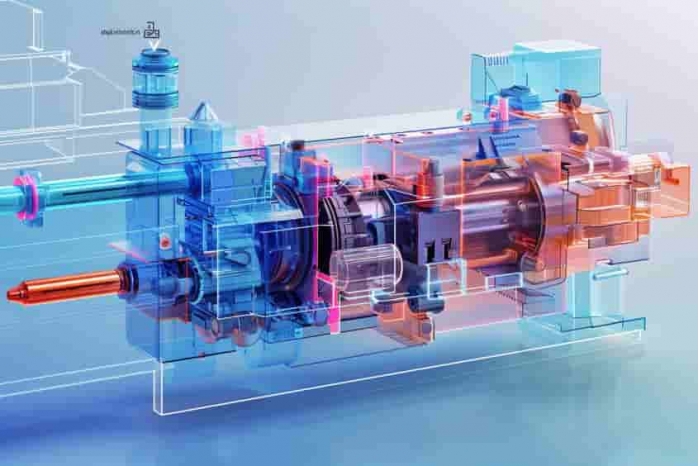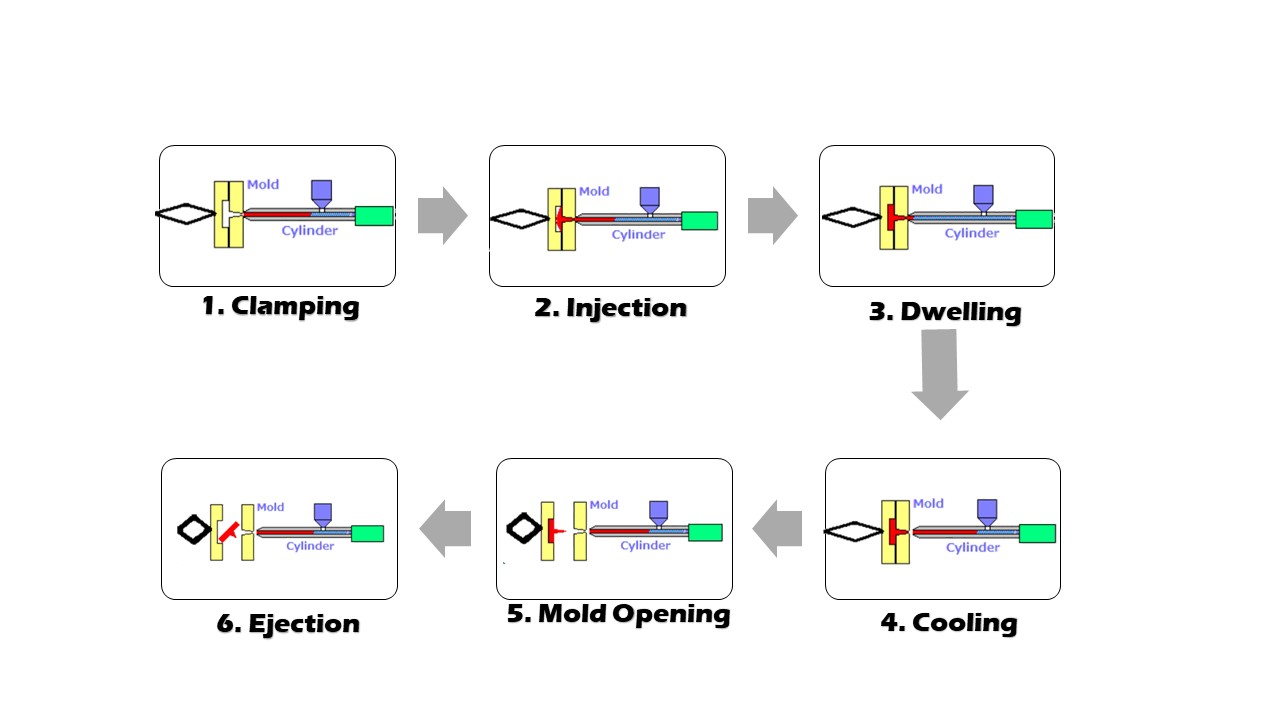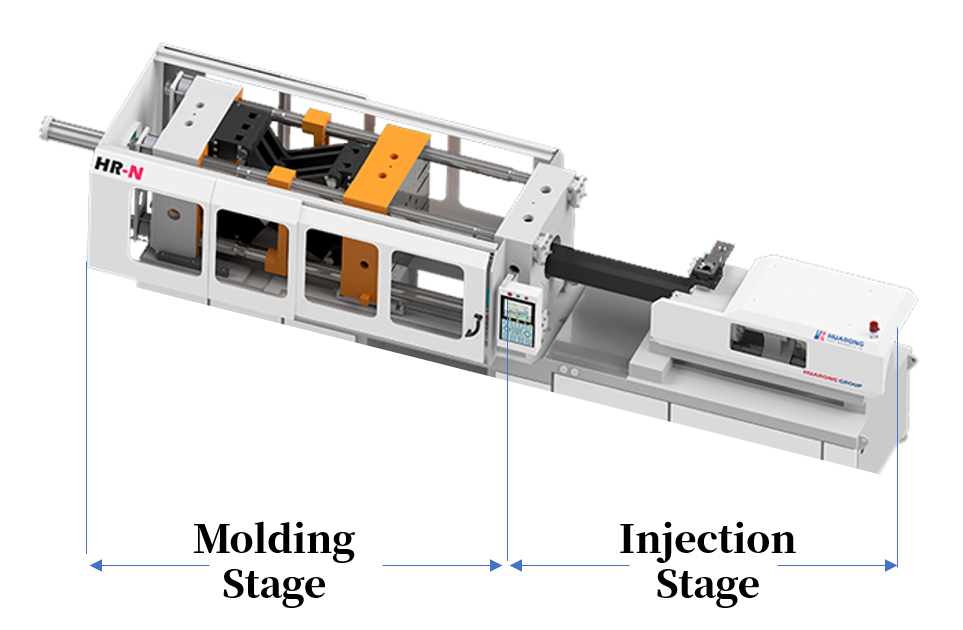What is Injection Molding? Processes, Benefits, and Applications
2024-02-26 16:18:52

Plastic injection molding is a basic technology of modern manufacturing, characterized by accuracy and efficiency in producing a wide range of products. Despite its widespread use, the complexities of this practice are difficult to understand. This guide aims to explain the process by showing each step and showing the many benefits and uses of this versatile manufacturing process.
Plastic injection molding involves melting pellets and injecting the molten material into a mold to create various parts and products. This method is renowned for producing high-precision items rapidly, making it ideal for mass production.
Further reading: What are Fundamentals of Injection Molding? 3 Keys to Injection Molding Plant
Advantages of Injection Molding
Plastic injection molding has many advantages, making it a stalwart in the automotive, medical, and consumer goods industries. These benefits include:
- Efficient and High Output: The injection mold is optimized for high output. With a turnaround time of just ten seconds, it's very useful for large-scale voice productions, quickly producing thousands of similar parts.
- Low Cost per Part: As the production rate increases, the cost per unit decreases significantly. Even for part-time runs, using aluminum molds can keep costs down.
- Feedback: Injection molding is highly repetitive, ensuring that each part meets quality standards. This feature is important for industries that require accuracy and consistency.
- A Wide Range of Materials: This process is suitable for a wide range of injection molding materials, including plastics and liquid silicone rubber.
- Large Material Choice: The process supports many , including plastics and liquid silicone rubber. You can also enhance properties with fillers and choose from a broad color palette.
- Less Waste: Injection molding reduces waste to a minimum compared to alternative manufacturing methods. Excess materials can often be recycled, which encourages sustainability.
- High Detailing: The high-end injection molding process can produce complex designs with fine detail, which is ideal for complex parts.
- Little to No Post-Processing: Most parts come out of the mold with a perfect surface finish, reducing the need for additional finishing techniques.
Disadvantages of Injection Molding
- Startup Cost: The initial investment to set up a nail piercing injection molding business is high. This includes expenses for factory premises, skilled workers, machinery, and equipment.
- Initial Lead Times: Production of the injection molding machine can take up to 12 weeks. Considering small or standard machines will help to get it done faster.
- Design Constraints: Effective injection molding requires careful consideration of design parameters such as draft angle, wall thickness, and gate and ejector location. Complex designs can present challenges when making a mold.
- Cost Inefficiency in Small-Volume Production: The initial setup costs may not be necessary for low-volume production. Alternative methods like 3D printing or CNC machining can provide more economical solutions for small batches.
The plastic injection molding process involves 6 steps, each of which is important to ensure that the final product meets the set quality standards.

Step 1. Clamping
In this first stage, the two halves of the injection mold are closed, usually made of metal. The mold is placed under high pressure through a clamping unit to ensure the correct formation of the plastic part.
Step 2. Injection
After the mold is closed, the plastic material, usually in the form of granules or pellets, is heated until it becomes liquid. The molten plastic is injected under high pressure into a closed mold cavity, filling the cavity and forming a mold-like shape.
Step 3. Dwelling
When it is in place, the molten plastic remains in the mold cavity for some time. In this way, filling the voids and ensuring an even distribution of the plastic material is possible, resulting in a high-quality product.
Step 4. Cooling
Once the plastic fills the mold cavity, it cools and hardens. This heating process is essential because it determines the final properties of the plastic part, including strength and lateral stability.
Step 5. Mold Opening
Once the plastic part has cooled and solidified, the mold is opened with the help of a clamp motor. The two parts of the mold are separated, and the new plastic part is removed from the mold cavity.
Step 6. Ejection
In the final stage, the ejector pin pushes the cured plastic part out of the mold cavity. Use a knife to remove excess material, called burrs, so that the final product meets the desired specifications.
Plastic injection molding is often required for the mass production of plastic parts. Some components and parameters must be carefully controlled to ensure the quality and consistency of the final product. Choosing the right equipment is essential to improve production efficiency and ensure the quality of the injected products.
Selection of Appropriate Plastic Materials and Mold Designs
The success of your injection molding program depends on several key factors, including:
Selection of Materials
Choosing a suitable material is crucial, considering strength, heat resistance, and chemical compatibility. For example, ABS is suitable for electronics and toys, and PA is ideal for mechanical parts, tools, bearings, and car parts because of its suitable temperature, chemical and moisture resistance.
Further reading: Comprehensive Guide to Top 10 Injection Molding Materials and Their Properties
Mold Design
A well-designed mold is essential for high-quality parts and efficient production. Elements such as gating, venting, and cooling channels significantly produce multiple or complex components that help shape the final plastic products.
Selection of Right Injection Molding Machines
Once the mold and plastic granules are prepared, the mold is placed into the injection molding machine. The plastic granules are then poured into the machine's hopper, where they are heated and melted by the friction of the machine's cylinder and piston screw. The molten plastic is then injected into the mold cavity, which cools and solidifies into the desired shape and size.
Machine Parameters
Fine-tuning injection molding machine parameters such as injection pressure, temperature, and cycle time is essential to optimize part quality and production efficiency.
Process Control
Maintaining consistent process control throughout production ensures consistent part quality and minimizes waste. Injection Molding Machine
1. Construction Industry
Plastic injection molding is revolutionizing construction. Key benefits include:
- High Stability: The materials used have excellent stability.
- Durability: The components can withstand exposure to the elements.
- Cost-Effectiveness: It is cheaper than traditional materials such as wood and metal.
- Energy Efficiency: Lightweight components improve energy savings.
- Versatility: Available in a wide range of finishes and materials.
Common applications: fasteners, accessories, hand tools.
2. Food & Beverage Industry
Compliance with health and safety standards such as GMA-Safe and FDA certification is important. Benefits include:
- Non-Toxic Materials: BPA-free and safe for food contact.
- Custom Solutions: Components for processing equipment, containers, etc.
Common applications: Beverage containers, filter parts, conveyor belt parts.
Further reading: Replacing Melamine and Acrylic: The Rise of PET/RPET Tableware in Affordable Markets
Further reading: The Science Behind Plastic Caps: How are Plastic Bottle Caps Made
3. Medical Industry
The medical sector places high demands on safety and reliability. Benefits include:
- Medical-Grade Materials: FDA-approved resins ensure safety.
- Chemical Resistance: Parts can withstand high temperatures and chemicals.
- Design Flexibility: Customized solutions for a variety of medical applications.
Common applications: Surgery preparation products, dental components, and test kits.
4. Automotive Industry
Automotive manufacturing has benefited greatly from plastic injection molding. Key Benefits:
- Design Flexibility: Customize parts to fit specific vehicle needs.
- Durability: Long-lasting components that can withstand everyday wear and tear.
- Cost Savings: Efficient production reduces overall costs.
Common applications: Mirror housings, cup holders, bumpers, dashboards. More information: Injection Molding Machines: Key to Precision Auto Parts Manufacturing
Further reading: Injection Molding Machine: Key to Precision Manufacturing of Automotive Parts
5. Sales Displays and Point of Sale
Sales displays need a balance between beauty and functionality. Benefits include:
- Custom Designs: Customized parts to enhance your product presentation.
- Durability: Long-lasting components suitable for high-traffic areas.
- Aesthetic Appeal: Attractive finishes that grab customer attention.
Common applications: Product stops, shelf dividers, and pegboard hooks.
In addition to its basic principles, injection molding includes a variety of advanced technologies that expand its possibilities.
- 2k Injection Molding: This technique allows parts to be produced using multiple materials in a single mold, resulting in improved functionality and aesthetics.
- Insert Molding: During the process, existing components, such as B. Metal inserts, are embedded into the molded part to increase strength or add specific functionality.
- Overmolding: Overmolding forms a layer of plastic around an existing part to create a protective or decorative exterior.
- In Mold Labeling (IML): This technique integrates decorative elements directly into the molded part, eliminating the need for a secondary finishing process.
- Two-Platen Molding: This configuration uses a two platen injection machine to clamp the mold. This allows for larger geometries and produces larger parts than 3-plate molding.
Other Articles Related to Injection Molding
We keep writing articles to share knowledge about injection molding technology.
- Vertical Injection Molding vs Horizontal Injection Molding for Plastic Components
- PET Preform Molding Solution: A Detailed Guide to PET Preform Manufacturing
- Microcellular Foam Injection Molding: Achieving Maximum Weight Reduction and Dimensional Stability
- Automotive Injection Molding: Process, Benefits, and Key Applications
- Thermoplastic Injection Molding Explained: How It Works & Why It’s Essential
- Thermoset Injection Molding: Process, Benefits & Applications
- Initial Costs: High setup costs for mold creation.
- Design Limitations: Complex shapes require intricate molds.
- Maintenance: Moulds need regular maintenance to ensure longevity.
- Sustainable Manufacturing: The increasing focus on environmental responsibility drives the development of bio-based and recyclable materials for injection molding.
- Automation and Robotics: Integrating automation and manipulator arms into injection molding processes will further enhance efficiency and ensure quality and consistency in injection molding products.
- Advanced Process Monitoring: Integrating smart factory management into injection molding machines for real-time monitoring and control systems will enable even more precise control over the process, optimizing quality and reducing waste.
Further reading: Sustainable Injection Molding Manufacturing: Two-Platen Injection Machine for Global Markets
Plastic injection molding is a robust manufacturing process with broad applications across various industries. Its efficiency, precision, and versatility have made it an essential technology for manufacturing various products, from automotive parts to medical devices. By understanding the process and benefits, companies can leverage this technology to achieve optimal production results.
Dependable Injection Molding Partner
As the injection molding industry advances, embracing sustainable manufacturing practices, automation, and advanced process monitoring, it sets the stage for a future where plastic products are efficient, cost-effective, environmentally responsible, and technologically advanced. If you are searching for a dependable injection molding machine manufacturer, please contact Huarong.
- Group Name: Huarong Group
- Brand: Huarong, Yuhdak, Nanrong
- Service Offerings: Injection Molding Machine, Vertical Injection Molding Machine, Injection Molding Automation
- Tel: +886-6-7956777
- Address: No.21-6, Zhongzhou, Chin An Vil., Xigang Dist., Tainan City 72351, Taiwan
- Official Website: https://www.huarong.com.tw/
Previous news : How much do you know about the history of injection molding machines?
Next news : Huarong Group's Exciting Presence at CHINAPLAS 2024 Exhibition

